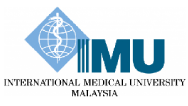Perception of nurses on ease of use, usefulness and system quality of electronic clinical documentation (ECD) at private hospitals in Klang Valley, Malaysia
Authors: Syakinah Anian, Mariani Ahmad Nizaruddin, Goventhamah Subramaniam, Jayanthi Marimuthu, Shalizah Sujak.
ABSTRACT
Introduction: The health information system with efficient processes and development in healthcare technology including an electronic clinical documentation (ECD) reporting draws the interest of a large number of people. Widespread expansion of the use of ECD is known to be advantageous to the health information system, however a workload is often questionable for healthcare professionals and productivity practices. The aim of this study is to analyse the perception of nurses in regards to the relationship between perceived ease of use, perceived usefulness and perceived system quality of ECD system.
Methods: The cross-sectional survey comprised of a population of nurses practising in clinical settings at private hospitals in Klang Valley, Malaysia. A total of 324 questionnaires was collected by using stratified random sampling with a 99% response rate. Smart-PLS was used to analyse the relationship between the latent variables.
Results: The perceived ease of use, perceived usefulness and perceived system quality have a significantly positive influence, resulting in a positive impact on the perception of nurses. The results of this research showed that the model’s R2 value was scored at 0.743, which indicated that 74.3% of the variance in perception on ECD was collectively explained by the three exogenous latent variables.
Conclusion: Positive perception on ECD system could be used as prediction on the acceptance by the user/nurses. This study is useful for top management and policymakers to strategise on ECD’s implementation.
Keywords: Medical record, computerised, Electronic clinical documentation, Technology Acceptance Model, Nurses.
Citation: IeJSME 2021 15 (2): 5-18

